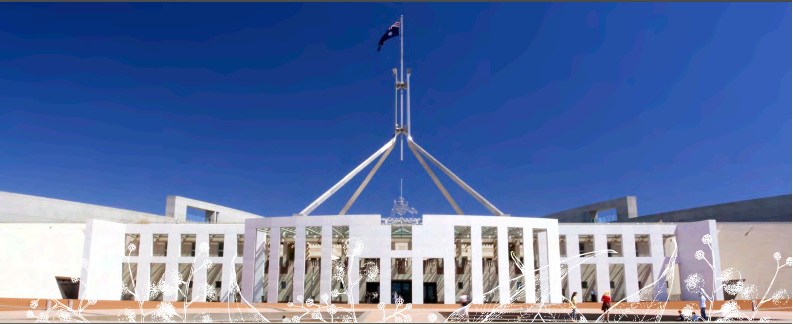At the citizenship ceremony, you pledge to uphold and obey the laws of Australia. Australia’s system of government is a parliamentary democracy. It is important for you to understand this system of government, how laws are made in our parliamentary democracy and how they are administered. It is also important to understand how you, as a citizen, will have a say in running the country.

How do I have my say?
Voting
As outlined in Part 2, in Australia, citizens aged 18 years or over must enrol to vote in federal, state and territory
elections and referenda on constitutional change.
In Australia’s parliamentary democracy, citizens have a say on how Australia is governed by voting for a person to represent them in parliament. If you are not correctly enrolled, you are not able to vote in an election.
Voting is compulsory in Australian elections, or if there are referenda on constitutional change.
The Australian Electoral Commission (AEC) is a Commonwealth agency responsible for conducting federal elections and referendums, and maintaining the Commonwealth electoral roll. The AEC is independent of the government. Political parties or people in government cannot influence the decisions of the AEC.
In Australia, voting in an election is by secret ballot, so you are free and safe to vote for any candidate. No one is allowed to know whom you have voted for, unless you choose to tell them. If you do not vote in an election and do not have a good reason for not voting, you may have to pay a fine. Compulsory voting is a way to make sure that the people have a say in who will govern and represent them in parliament.
Raising maters with your representatives
Australian citizens can contact their elected representative to raise their concerns about government policy.
In this way, all Australians can have a say in forming the laws and policies of a government. If a citizen tells his
or her elected representative a law needs to be changed, the elected representative should consider what as
been suggested.
How did we establish our system of government?
Federation
After British settlement and before 1901, Australia was made up of six separate, self-governing British colonies.
Each colony had its own constitution and laws relating to defence, immigration, postage, trade and transport.
However, this created difficulties between the colonies. For example, trade and transport between the colonies was expensive and slow, and enforcing the law across borders was difficult. The separate colonies also had weak systems of defence.
As a result, people wanted to unite the colonies to form a single nation. More importantly, Australia’s national
identity was beginning to form. Sporting teams were representing Australia internationally and an Australian
culture was developing in popular songs, poems, stories and art.
Uniting the nation was a difficult task, but over time, the idea of one Australian nation became a reality. On 1 January 1901, the colonies were united into a federation of states called the Commonwealth of Australia.
The Australian Constitution
The Commonwealth of Australia Constitution Act 1900 (Australian Constitution) is the legal document that sets out the basic rules for the government of Australia. The Australian Constitution was originally passed as part of a British Act of Parliament in 1900. On 1 January 1901, the Australian Constitution came into effect and the Australian colonies became one independent nation: the Commonwealth of Australia.
The Australian Constitution established the Parliament of the Commonwealth of Australia, consisting of a House of Representatives and a Senate. The Constitution also established the High Court of Australia, which has the ultimate power to apply and interpret the laws of Australia.
The Australian people can change the Australian Constitution by voting in a referendum, such as the 1967 Referendum where more than 90 per cent of Australians voted ‘Yes’ to allow Aboriginal peoples to be counted in the Census.
In a referendum, there needs to be a ‘double majority’ for the Australian Constitution to be changed. That is, both the majority of voters in a majority of states and a majority of voters across the nation must vote for the change.

